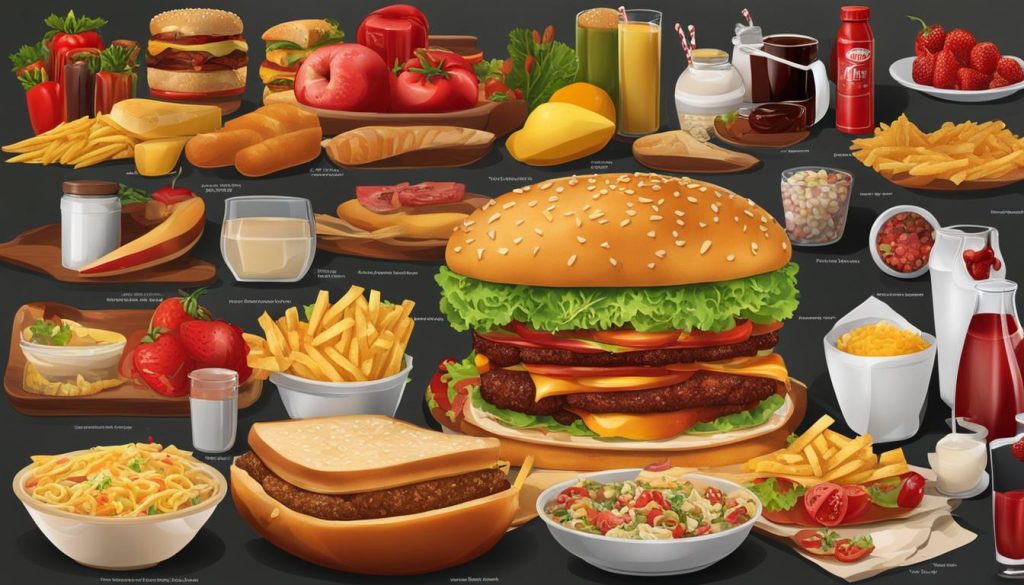How Do Diets Differ Around The World? Quick Facts for Instant Clarity

Diets around the world vary greatly due to cultural, economic, and environmental factors. The way people eat and the types of foods they consume are deeply intertwined with their traditions, lifestyles, and local availability of ingredients. Exploring global diet variations can provide us with valuable insights into cultural diet differences and international eating habits.
Food customs across countries are shaped by a myriad of influences, including historical events, religious beliefs, and regional agriculture. By understanding the diverse dietary practices of different cultures, we can gain a deeper appreciation for the rich tapestry of global cuisine.
Take a moment to reflect on the vibrant array of dishes and flavors that define the world's culinary traditions. From the spicy curries of India to the Mediterranean delights of Greece and the hearty stews of Mexico, every country boasts its own unique gastronomic identity.
Key Takeaways
In this section, we will explore key takeaways about global diets, dietary diversity, cultural eating patterns, and the adoption of Western diets. We will also delve into the definition and significance of food-based dietary guidelines (FBDG) and discuss the health consequences and environmental impact of Western food influence.
- Diets differ around the world due to cultural, economic, and environmental factors.
- FBDG provide evidence-based recommendations for healthy eating in different countries.
- Common elements of healthy diets include consuming a variety of foods, prioritizing fruits and vegetables, and limiting sugar, fat, and salt.
- The adoption of Western diets in developing countries can have negative health and environmental impacts.
- Embracing traditional cultural dishes and ingredients can promote better health and reduce the influence of Westernized diets.
Now, let's dive deeper into the concept of food-based dietary guidelines (FBDG) and their importance in promoting healthy eating.
What are food-based dietary guidelines (FBDG)?
FBDG are evidence-based recommendations that aim to translate scientific knowledge about nutrition into specific, culturally appropriate dietary guidelines. These guidelines are intended to influence consumer behavior and inform national food, nutrition, and health policies and programs.
FBDG take into account various factors, including food and nutrient intakes, cultural preferences, and the prevalence of diet-related health outcomes. By providing specific recommendations, FBDG help individuals make informed choices about their diets and encourage the consumption of a diverse range of nutritious foods.
However, the adoption of Western diets in developing countries has raised concerns due to its adverse effects on health and the environment.
Impact of Westernized diets on developing countries
The Western diet, characterized by a high intake of animal products and processed foods, is associated with an increased risk of non-communicable diseases such as type 2 diabetes, cardiovascular disease, and certain cancers.
In many developing countries, there is a fascination with Western diets and products, which are often perceived as symbols of wealth and social status. This perception, fueled by neocolonialism, leads to the adoption of Western diets and the consumption of more animal products.
Unfortunately, the demand for animal products in developing countries contributes to deforestation and environmental degradation, which further exacerbates the global climate crisis.
Additionally, multinational food corporations have been criticized for their role in exploiting cheap labor and engaging in human rights abuses in marginalized communities in developing countries.
To counter these negative consequences, one solution is to embrace traditional cultural dishes and ingredients. This not only promotes dietary diversity and healthier eating habits but also helps decolonize nutrition and reduce the influence of Westernized diets.
By valuing and preserving traditional food choices, we can improve individual and collective health while also respecting and protecting the environment.

In Short, "How Do Diets Differ Around The World"?
Diets around the world exhibit significant variations due to diverse cultural, economic, and environmental influences. Food-based dietary guidelines (FBDG) aim to provide specific recommendations for healthy eating in different countries. While there are common elements that promote a healthy diet, such as consuming a variety of foods, prioritizing fruits and vegetables, and limiting sugar, fat, and salt, there are also noteworthy distinctions that reflect cultural eating habits and international food customs.
It is important to recognize that the adoption of Western diets in developing countries can have detrimental effects on health and the environment. Studies have shown an increased risk of non-communicable diseases, including type 2 diabetes, cardiovascular disease, and certain cancers, among individuals who adopt a Western diet. Additionally, the demand for animal products associated with Western diets contributes to deforestation and environmental degradation, further exacerbating global sustainability challenges.
One potential solution to address the negative consequences of Westernized diets is to embrace and celebrate traditional cultural dishes and ingredients. This approach can promote dietary diversity and improve health outcomes. By decolonizing nutrition and valuing the rich heritage of local food customs, individuals and communities can safeguard their well-being while preserving and honoring their unique cultural identities.
Understanding and appreciating the global dietary variations and cultural eating habits can foster a more inclusive and enlightened approach to nutrition. By combining universal healthy eating principles with respect for diverse customs and traditions, we can cultivate a more sustainable and harmonious relationship with food.